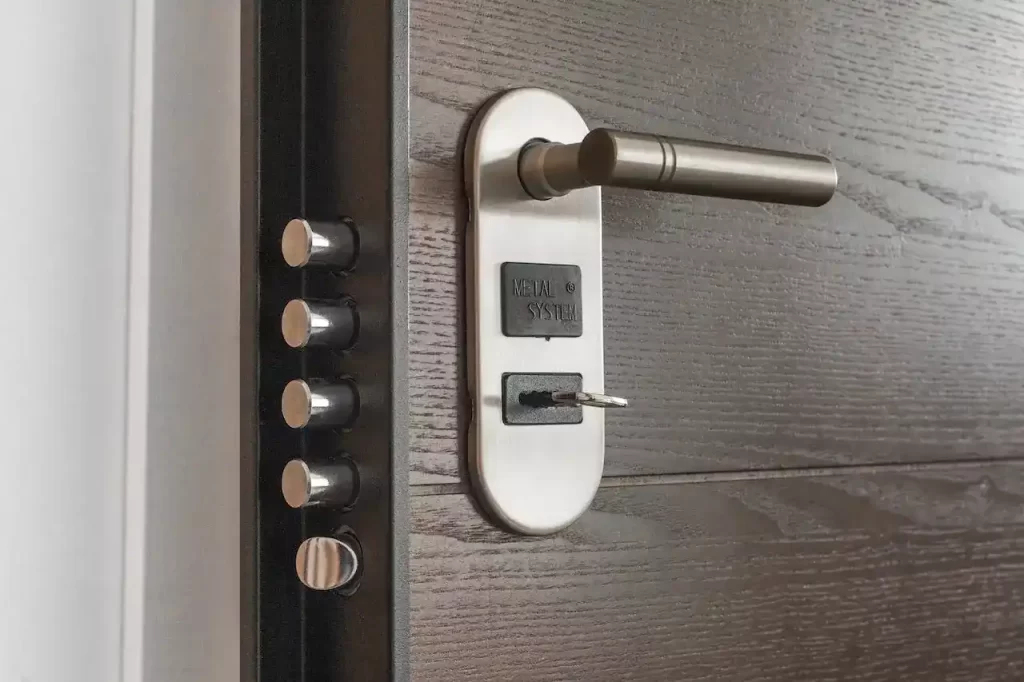Keeping our homes safe and secure is a top priority for many of us, but it can come at a hefty price tag. From purchasing and installing security systems to paying for monitoring services, the costs can quickly add up. That’s why it’s important to approach home security with a financially savvy mindset, so we can protect our homes without breaking the bank.
In this post, we’ll discuss practical ways to save money on home security. We’ll explore options for DIY home security systems and how to install and maintain them, as well as the pros and cons of professional monitoring services versus self-monitoring. We’ll also cover how installing a home security system can result in lower homeowner’s insurance premiums and provide tips on maximizing insurance discounts. Additionally, we’ll discuss the benefits of forming a neighborhood watch group and how community efforts can enhance home security and reduce costs.
Our goal is to help you protect your home and loved ones without draining your bank account. By being mindful of your security needs and adopting a financially savvy approach, you can enjoy peace of mind knowing your home is safe and secure, while also saving money in the process. So, let’s dive in!
Assess Your Security Needs
Before investing in any home security measures, it’s important to assess your specific security needs. This will help you determine which areas of your home require the most protection and the budget you’ll need to allocate for it.
Conducting a risk assessment is the first step to take. This involves identifying potential security vulnerabilities in and around your home, such as poorly lit areas or easily accessible entry points. It’s also important to consider your neighborhood’s crime rates and any recent incidents that may have occurred.
Once you’ve identified the potential security risks, prioritize the areas that need the most protection. For example, if your front door is easily accessible, consider installing a smart lock or a video doorbell to increase security in that area.
Finally, determine your budget for home security. Knowing your budget will help you decide which security measures to invest in and which ones you can hold off on for the time being. Remember, it’s better to have some level of security in place than none at all, so start with the basics and work your way up as your budget allows.
By taking the time to assess your security needs, you can ensure that your home is protected in the areas that need it most, while also sticking to a budget that works for you.
DIY Home Security
DIY home security systems offer several benefits, including affordability and ease of installation. With the wide range of DIY security options available, you can customize your system to meet your specific needs without breaking the bank.
One popular DIY security option is the video doorbell, which allows you to see who’s at your door and communicate with them remotely. Other options include motion sensors, which can detect movement and trigger an alarm, and smart locks, which can be controlled via your smartphone or voice commands.
When installing a DIY security system, it’s important to carefully follow the instructions provided by the manufacturer. If you’re unsure about anything, don’t hesitate to reach out to customer support for assistance. Additionally, ensure that your system is properly maintained to ensure optimal performance. This includes checking the batteries in your sensors and making sure your video feed is clear and uninterrupted.
Another tip is to regularly test your DIY system to make sure everything is working as it should. This includes testing your alarm system and ensuring that your devices are communicating with each other properly. By regularly testing and maintaining your DIY security system, you can rest assured that your home is protected without the added expense of professional installation and monitoring.
DIY home security systems offer a budget-friendly and customizable solution to protecting your home. By choosing the right system for your needs and taking the time to properly install and maintain it, you can enjoy peace of mind knowing that your home is safe and secure.
Monitoring Services
When it comes to home security, monitoring services are an important consideration. There are two options to choose from: professional monitoring services and self-monitoring. Each option has its own pros and cons, and it’s important to carefully consider both before making a decision.
Professional monitoring services involve a third-party company monitoring your security system and responding to any alarms or alerts. These services typically come with a monthly fee and may require a long-term contract. Self-monitoring, on the other hand, involves monitoring your own system and responding to alerts yourself.
While professional monitoring services provide a sense of security and peace of mind, they can be costly. Self-monitoring is more budget-friendly but requires more involvement on the part of the homeowner.
When choosing a monitoring service, it’s important to consider your budget, your level of comfort with handling alerts and alarms, and the level of security you require. Some homeowners may prefer the added security of a professional monitoring service, while others may feel confident in their ability to self-monitor their system.
It’s also important to research and compare different monitoring services before making a decision. Look for a service that offers the features you need, such as 24/7 monitoring, mobile alerts, and easy integration with your existing security system.
Ultimately, the choice between professional monitoring services and self-monitoring depends on your individual needs and budget. By carefully weighing the pros and cons of each option and researching your choices, you can make an informed decision and choose the monitoring service that’s right for you.
Insurance Discounts
Installing a home security system can lead to lower homeowner’s insurance premiums, as it reduces the risk of break-ins and property damage. Insurance companies often offer discounts to homeowners who have a security system in place, as it indicates that they are taking proactive steps to protect their home.
To maximize your insurance discounts, it’s important to inform your insurance provider of your new security system and provide them with any documentation they may require. This may include proof of purchase and installation, as well as a certificate of monitoring from your security provider.
In addition, be sure to compare insurance policies and providers to find the best deal. Some insurance companies may offer larger discounts than others, so it’s important to shop around and find the best option for your specific needs.
It’s also important to regularly update your insurance provider on any changes to your home security system, such as upgrades or additional devices. This ensures that you continue to receive the maximum insurance discount available.
Installing a home security system not only protects your home and family, but can also lead to significant savings on your homeowner’s insurance premiums. By taking the necessary steps to inform your insurance provider and maximize your discounts, you can enjoy peace of mind and a little extra money in your pocket.
Community Efforts
Forming a neighborhood watch group can be a highly effective way to enhance home security and reduce costs. A neighborhood watch group is made up of community members who work together to monitor and report suspicious activity in their neighborhood. By keeping an eye out for each other, neighbors can deter crime and improve the overall safety of their community.
One of the main benefits of a neighborhood watch group is the reduced need for expensive security measures, such as professional monitoring services or high-tech security systems. By working together and staying vigilant, neighbors can create a strong network of support and protection without breaking the bank.
To start a neighborhood watch group, begin by reaching out to your neighbors and gauging their interest. Hold a meeting to discuss the benefits of forming a group, and discuss strategies for keeping the community safe. This may include creating a phone tree to quickly alert neighbors of suspicious activity, organizing regular neighborhood patrols, or coordinating with local law enforcement.
It’s important to establish clear guidelines and goals for the group, and to encourage participation from all members of the community. By working together and staying organized, a neighborhood watch group can create a safer, more connected community while reducing the cost of home security measures.
Community efforts can be a highly effective way to enhance home security and reduce costs. By forming a neighborhood watch group and working together to keep the community safe, neighbors can enjoy greater peace of mind and a stronger sense of community.
Conclusion
In summary, there are several ways to save money on home security through smart financial planning. These include assessing your security needs, considering DIY options, comparing professional monitoring services with self-monitoring, maximizing insurance discounts, and forming a neighborhood watch group.
Financial planning is an essential aspect of home security, as it allows you to prioritize your needs and allocate your resources accordingly. By taking a proactive approach to home security, you can reduce the risk of break-ins and property damage while minimizing the cost of expensive security measures.
It’s important to remember that every home and community is unique, so it’s essential to assess your specific needs and budget when choosing a home security solution. By taking the time to research your options and implement the tips provided in this post, you can create a safer and more secure home without breaking the bank.
In conclusion, we encourage readers to take action and implement the tips provided in this post. Whether you choose to install a DIY security system, compare monitoring services, maximize insurance discounts, or form a neighborhood watch group, there are many ways to enhance home security and reduce costs through smart financial planning. By prioritizing your security needs and allocating your resources accordingly, you can enjoy greater peace of mind and a safer, more secure home.





